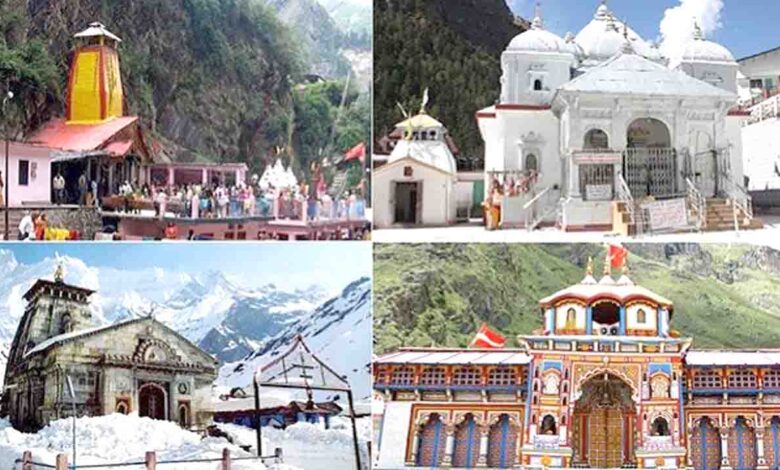Char Dham Yatra – a spiritual journey turning into an environmental crisis?

GUEST COLUMN
 Rakesh Kapoor
Rakesh Kapoor
The Char Dham Yatra, one of India’s most sacred pilgrimages encompassing Yamunotri, Gangotri, Kedarnath and Badrinath in Uttarakhand, has long been a spiritual magnet attracting millions of devotees each year. However, what once was a solemn religious journey is now increasingly viewed as an environmental and tourism management crisis. While the pilgrimage plays a significant role in the region’s economy, its unchecked expansion is beginning to “kill” real tourism and pose threats to the fragile Himalayan ecosystem.
Environmental degradation: The registration (offline and online) reveal the number of pilgrims which was three lakh in 2020, stood at five lakh in 2021, became 45 lakh (205 days) in 2023 and jumped to 48 lakh (153 days) in 2024. According to same sources the number of vehicles which was 3. 27 lakh in 2022 almost doubled to 5.20 lakh operators in 2024.This is not the only means of transport, as there are also 4,300 registered operators, more than 8,000 mules and around 2,400 Dandi-Kandi carriers en route. All these factors are affecting road infrastructure and aggravating waste disposal, which is already in need of improvement. The massive influx of pilgrims, especially during the peak months from May to July, leads to overcrowding, deforestation and waste mismanagement. Lack of proper toilets, the open defacation along riversides, in the nullahas and forest area is entering tributaries of the sacred Ganga, causing health and environmental issues. Narrow mountain roads are widened to accommodate vehicles, often by blasting hillsides, cutting the toe of slopes making the terrain more vulnerable to landslides and soil erosion. According to some environmental experts, the Char Dham highway project has led to the felling of thousands of trees and disturbed natural water channels, accelerating glacier melt affecting various major glaciers like Gangotri, Gaumukh, Satopant, Alkapuri, Khatslag, Dunagiri and Bandarpoonch which are receding at faster than expected rate, bearing brunt of lopsided development the and destabilising region’s geography, the study by ICIMOD and WIHG has confirmed. Moreover, the smaller towns on the Char Dham Yatra route including Badkot, Hanumanchatti, Jankichatti, Peepalkoti, Jyotirmath and Karnprayag, among others, all have the civic amenities barely enough for local population if not inadequate, but they are certainly unable to meet the demands of lakhs of pilgrims thronging every summer. The hotels, Dharmshalas and eateries often lack proper waste disposal systems, circumventing various rules and regulations, building bye laws and urban planning norms. The result is evident: piles of plastic, human waste and non-biodegradable trash lining riverbanks and trekking routes. This pollution seeps into the Ganga and Yamuna rivers, threatening biodiversity and the water security of millions downstream. Impact on real tourism: While pilgrimage tourism grows exponentially, it overshadows the region’s potential for sustainable and experiential tourism. Uttarakhand is home to pristine valleys, rich biodiversity, culture-rich villages and adventure trails. These attractions — which promote slower, environmentally responsible tourism — are often ignored or even degraded due to the focus on catering to the mass pilgrimage market. Real tourism, which values nature, local culture and sustainability, is losing ground to overcrowded, chaotic Yatra rushes. Tourists seeking peace, adventure, or cultural immersion are increasingly deterred by the over-commercialisation, traffic congestion and environmental deterioration of these once-pristine areas.
Infrastructure versus ecology: The Char Dham Mahamarg Vikas Pariyojna (Char Dham Road Project), aimed at improving connectivity to the pilgrimage sites, has been under scrutiny for allegedly bypassing environmental safeguards. Experts argue that the ecological cost of such development far outweighs the benefits, especially when alternative eco-sensitive approaches could have been employed. Additionally, the growing number of helicopter services to Kedarnath, once a challenging trek, has drastically altered the pilgrimage experience and added noise and air pollution to an already stressed environment, biodiversity, fragile geo-demographic profile and geographic setting. If we just go by numbers provided by the government, from nine sites 250 daily sorties of helicopters take about 1,500 pilgrims to the shrines- mainly Kedarnath.
A call for balance: The solution to the challenge is in rethinking the Char Dham Yatra. The pilgrimage should be aligned with principles of environmental stewardship and sustainable tourism. Controlled visitor numbers, better waste management, eco-friendly infrastructure and promotion of offbeat, responsible tourism can help restore balance. The views of the author were echoed in a recently held online discussion involving priests and other stakeholders of Char Dham which concluded that the Char Dham Yatra, if left unchecked, risks turning the spiritual Himalayas into a zone of irreversible ecological damage and shallow mass tourism. Protecting the environment must become a spiritual responsibility, not a bureaucratic afterthought. Only then can real tourism take place— one that celebrates nature, culture and sustainable tourism.
(The author is an environmental activist; views are personal)






